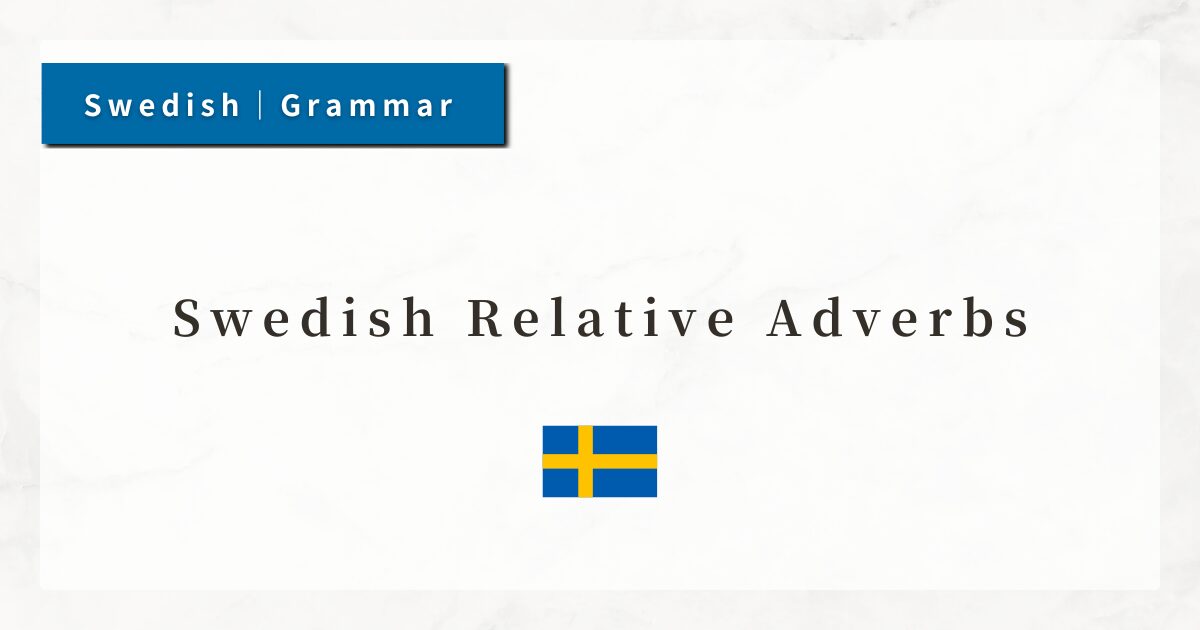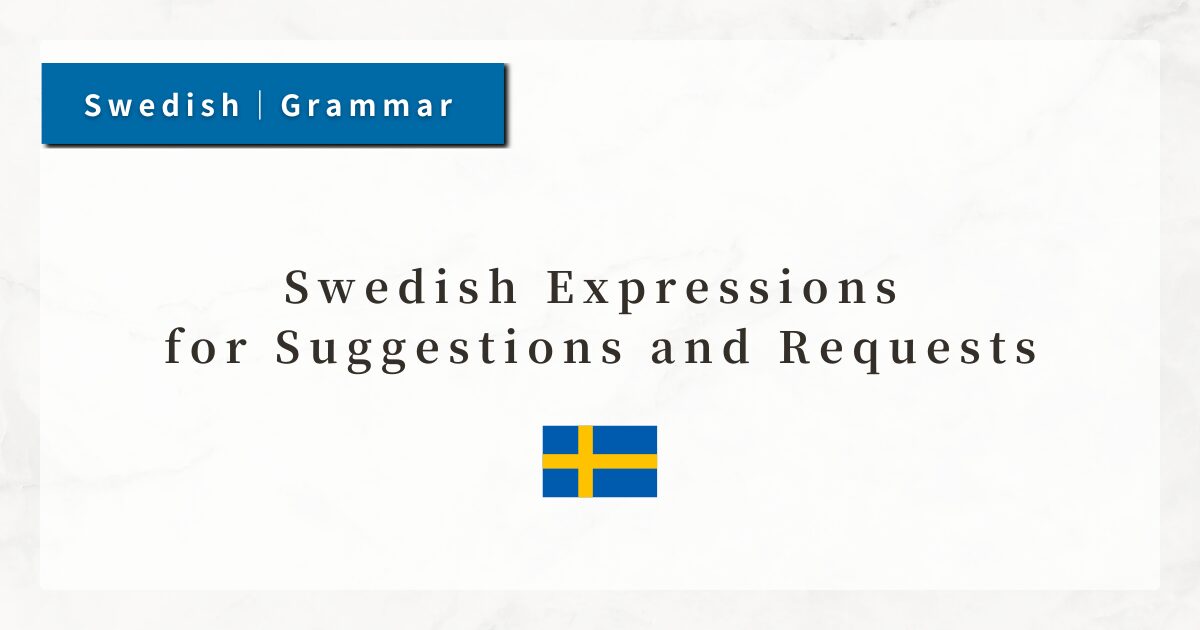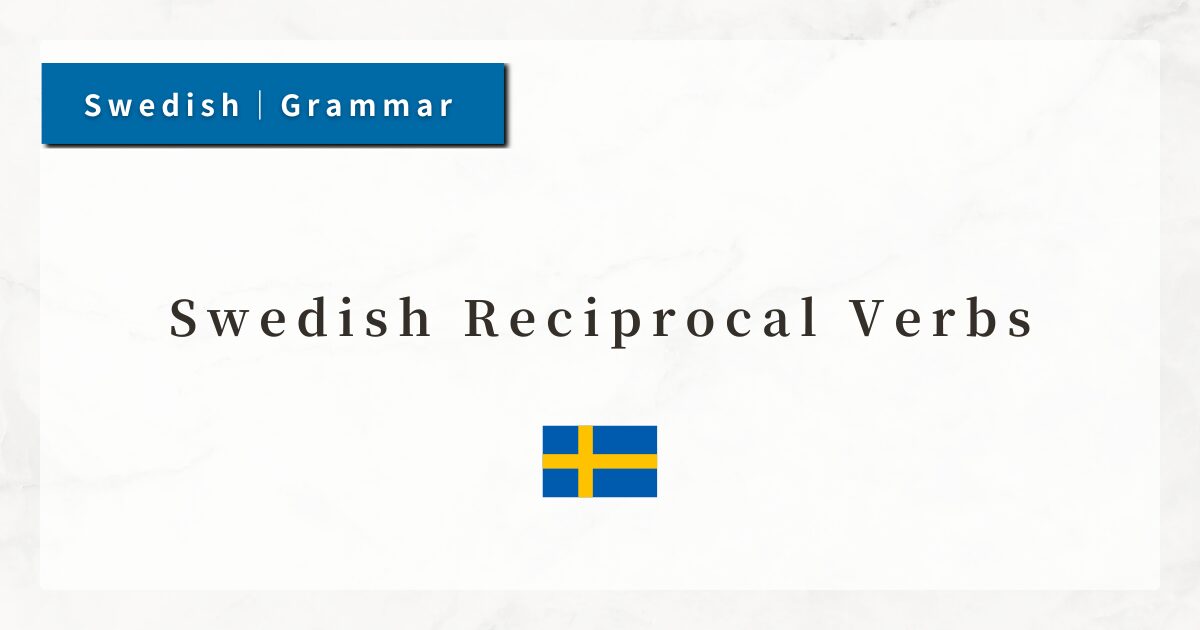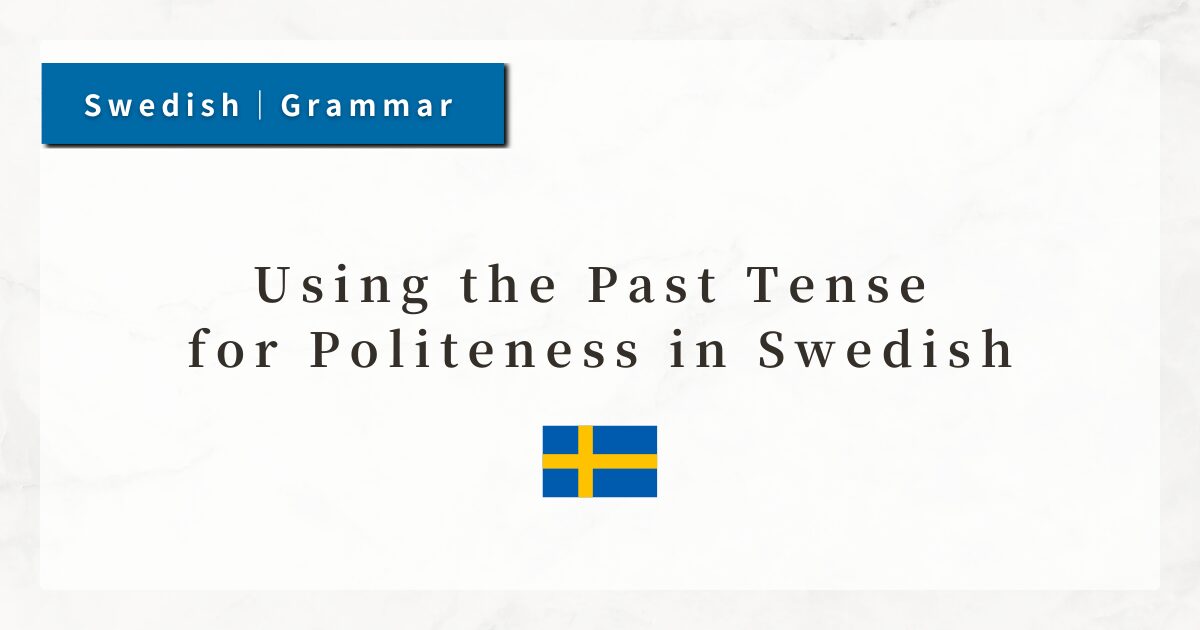#58 Swedish Relative Adverbs|Roles and Grammar Rules

In Swedish, relative adverbs refer back to a noun or an entire clause and are used to describe place, time, reason, or manner. They correspond to English words such as where, when, why, and how.
By using relative adverbs, you can naturally connect two sentences and combine more complex information into a single sentence.
In this lesson, I will explain the main types of relative adverbs in Swedish and how to use them.
1. What Are Relative Adverbs?
Relative adverbs in Swedish function as adverbs that introduce subordinate clauses.
They refer back to a previously mentioned noun or a whole sentence and add information such as where, when, why, or how.
- Jag vet var du bor.
(I know where you live.)
Here, the relative adverb var describes the place “where you live.”
2. Common Relative Adverbs and Their Uses
The following relative adverbs are frequently used in Swedish:
| Relative Adverb | Meaning | Example | Translation |
|---|---|---|---|
| var | where | Jag vet var han arbetar. | I know where he works. |
| dit | to where | Vi åkte till staden dit han flyttade. | We went to the town where he moved. |
| där | there / where | Det finns en park där vi lekte som barn. | There is a park where we played as children. |
| när | when | Jag minns dagen när vi träffades. | I remember the day when we met. |
| då | at that time | Det var en tid då jag studerade i Lund. | It was a time when I studied in Lund. |
| varför | why | Jag förstår inte varför han är arg. | I don’t understand why he is angry. |
| hur | how | Hon berättade hur hon lärde sig svenska. | She told me how she learned Swedish. |
3. Usage of Relative Adverbs
3-1. var (where)
Used to describe the place in which something happens.
- Jag vet var hon arbetar.
(I know where she works.)
3-2. dit (to where)
Used with verbs of motion, indicating direction.
- Vi reste till staden dit han flyttade.
(We traveled to the town where he moved.)
3-3. där (where/there)
Refers to a specific location.
- Här är parken där vi brukade leka.
(This is the park where we used to play.)
Just like in English (“the place where…”), Swedish uses där to specify a location.
3-4. när (when)
Refers to the time something happened.
- Jag minns dagen när vi träffades första gången.
(I remember the day when we first met.)
3-5. då (at that time)
Means “at that time” or “back then.” It has a slightly more literary or narrative tone.
- Det var en tid då vi skrev brev istället för mejl.
(It was a time when we wrote letters instead of emails.)
3-6. varför (why)
Corresponds to English why, expressing a reason.
- Jag vet inte varför han är arg.
(I don’t know why he is angry.)
3-7. hur (how)
Corresponds to English how, expressing the manner in which something is done.
- Hon berättade hur hon lärde sig svenska.
(She explained how she learned Swedish.)
4. Relative Adverbs vs. the Relative Pronoun som
In Swedish, you can often express similar meanings with the relative pronoun som.
- Det är staden som han flyttade till.
- Det är staden dit han flyttade.
Both mean “That is the town he moved to.”
However, the version with the relative adverb dit sounds more natural and concise, while the version with som can feel slightly heavier.
5. Summary
- Relative adverbs in Swedish describe where, when, why, and how, and connect clauses.
- Common ones include: var, dit, där, när, då, varför, hur.
- While som can often be used as an alternative, relative adverbs generally sound more natural and fluent.




